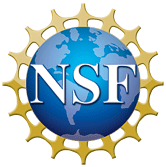Browse wiki
From CSDMS
Creation date"Creation date" is a predefined property that corresponds to the date of the first revision of a subject and is provided by <a target="_blank" rel="nofollow noreferrer noopener" class="external text" href="https://www.semantic-mediawiki.org/wiki/Help:Special_properties">Semantic MediaWiki</a>.
01:15:26, 10 October 2025 +
Has query"Has query" is a predefined property that represents meta information (in form of a <a target="_blank" rel="nofollow noreferrer noopener" class="external text" href="https://www.semantic-mediawiki.org/wiki/Subobject">subobject</a>) about individual queries and is provided by <a target="_blank" rel="nofollow noreferrer noopener" class="external text" href="https://www.semantic-mediawiki.org/wiki/Help:Special_properties">Semantic MediaWiki</a>.
November 15, 2025 +
We are planning to rapidly fill a postdoc … We are planning to rapidly fill a postdoc position described below at the University of Washington. Please email erkani@uw.edu for any questions.</br></br></br>'''Postdoctoral'''<br></br>'''Research Associate'''<br></br>— AI-enhanced Models for Postfire Geologic Hazard Cascades</br></br></br>Department of Civil and Environmental Engineering, University of Washington, Seattle</br></br>'''Position'''<br></br>'''Overview'''<br></br></br>We are looking for a Postdoctoral Research Associate who will join an interdisciplinary team to develop an AI-enhanced modeling framework for predicting postfire geologic hazard cascades. The project aims to identify rainfall thresholds that trigger debris flows, incorporate missing processes to improve predictions, and create transferable models to support early warning and risk mitigation.</br></br>'''Project'''<br></br>'''Team'''<br></br>* University of Washington: Civil & Environmental Engineering (Dr. Erkan Istanbulluoglu), Earth & Space Sciences, eScience Institute (Dr. Marine Denolle), Applied Math/Electrical Engineering and AI Institute in Dynamic Systems (Dr. Nathan Kutz),</br>* Colorado School of Mines: Geology and Geological Engineering (Dr. Paul Santi),</br>* U.S. Geological Survey: Landslide Hazards Program (Dr. Francis Rengers).</br></br></br>'''Project'''<br></br>'''Description'''<br></br>This project will assemble a comprehensive AI-ready, multimodal dataset (topography, meteorology, vegetation/land cover, burn severity, soils, instrumentation/observations, and other environmental variables) covering major wildfires across the Western United States. This dataset will serve as the basis for probabilistic and physics-informed models that predict postfire debris-flow initiation and runout. Modeling activities will blend data-science methods with geomorphic theory and will be implemented within the Landlab earth-surface modeling framework. Resulting watershed models will be used to derive reduced-order models for rapid, scalable prediction and early-warning applications.</br></br>'''Qualifications'''<br></br>We seek an enthusiastic geoscientist, engineer, or applied data scientist with:</br>* Experience in quantitative geomorphology, hydrology, geospatial analysis, and/or process-based modeling</br>* Strong data science skills with familiarity in handling multimodal data, including handling tabular, raster/vector geospatial, time-series, and text/metadata (highly desirable) in a geoscientific context</br>* Demonstrated experience with, Python coding skills, version-controlled code repositories (e.g., GitHub), and model-sharing or ML tools such as Hugging Face and/or distributed modeling environments. </br>* PhD required at the time of appointment</br></br></br>'''Responsibilities'''<br></br>The postdoc will closely work with two graduate students (one at Mines, one at UW) and an undergraduate student, and will be expected to:</br>* Lead the creation of a standardized, AI-ready geospatial datasets (year 1)</br>* Design and implement probabilistic ML and physics-informed hybrid models for debris flow transport (year 1)</br>* Design stochastic numerical experiments with Landlab to investigate watershed eco-hydro-geomorphic response to wildfires (year 2). </br>* Provide mentorship to students working in the project. </br></br></br>'''Appointment'''<br></br>'''Details'''<br></br>This is initially a one-year appointment with the possibility of a one-year extension contingent on performance and available funding. This position is funded by the National Science Foundation and philanthropic contributions. Benefits for postdocs at the University of Washington can be found (here: https://hr.uw.edu/benefits/benefits-orientation/post-doctoral-scholars-and-fellows/).</br></br></br>'''Application'''<br></br>To be considered, please send a cover letter, CV, and names of three references to: erkani@uw.edu. Review of applicants will start on November 15, 2025. Anticipated start date for the position is 01/15/2026. to: erkani@uw.edu. Review of applicants will start on November 15, 2025. Anticipated start date for the position is 01/15/2026.
Postdoc position +
University of Washington +
Last editor is"Last editor is" is a predefined property that contains the page name of the user who created the last revision and is provided by <a target="_blank" rel="nofollow noreferrer noopener" class="external text" href="https://www.semantic-mediawiki.org/wiki/Help:Special_properties">Semantic MediaWiki</a>.
United States +
Modification date"Modification date" is a predefined property that corresponds to the date of the last modification of a subject and is provided by <a target="_blank" rel="nofollow noreferrer noopener" class="external text" href="https://www.semantic-mediawiki.org/wiki/Help:Special_properties">Semantic MediaWiki</a>.
01:15:26, 10 October 2025 +
Washington +
Terrestrial Working Group +
